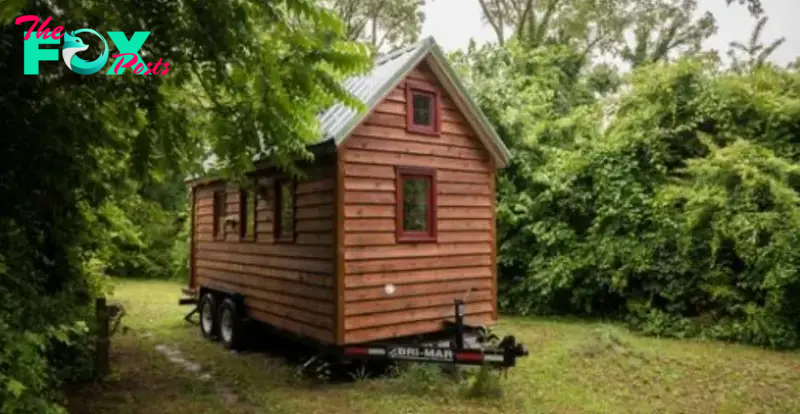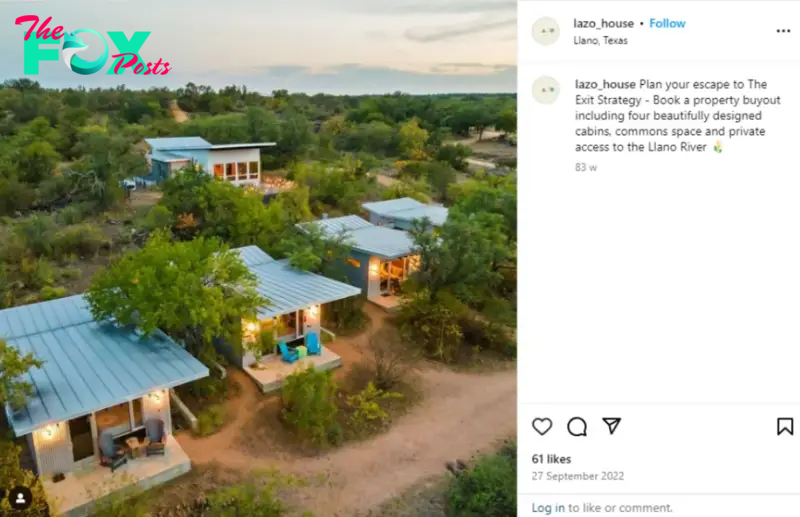Lifestyle
After two decades of friendship, best friends buy a piece of land and establish a quaint little town that they envision as a retreat for vacations and their future retirement together

Seeking an escape from their busy city lives, four couples decided to create a unique community of tiny vacation homes to fulfill their retirement dreams together.
This eco-friendly retreat, tailored to individual needs, allows the couples to enjoy a shared experience surrounded by their closest friends. After more than two decades of friendship, these Texas couples were eager to find a quiet place away from their busy Austin homes, a place where they could immerse themselves in nature and rejuvenate.
When they discovered a piece of land near the Llano River, just an hour from Austin and perfect for nature lovers, they recognized its potential despite its rugged condition.
Fred Zipp, a former editor of the Austin American-Statesman, shared his first impressions with Garden and Gun magazine: “At first, it wasn’t very inviting”. He and his wife, Jodi, are among four couples who care about environmental sustainability and minimizing their carbon footprint. “This place has its charm, even when it’s dry”, Fred noted, pointing out the herds of wild buffalo that roam the rugged landscape. “We’re focused on conserving water for the native trees and grasses, which are really beautiful.”

The couple originally planned to build a house together, but after learning about the tiny house movement, they changed their focus and decided on individual houses and a communal building for gatherings.
With the help of San Antonio architect Matt Garcia, the vision took shape. With a budget of $40,000 per house, Garcia designed four compact 350-square-foot cabins, each equipped with a double bed, kitchenette and bathroom.
“We wanted a place where we could spend quality time together, eat together and enjoy each other’s company, while still maintaining privacy when needed”, Jodi explained.
The designs also included sustainable elements such as roofs that capture rainwater while meeting conservation guidelines. To combat the hot Texas climate, the cabins are insulated with spray foam and feature large overhangs to minimize heat gain.

Garcia focused on creating an inviting interior, contrasting the sleek metal facades with warm, grained plywood surfaces. The natural gray concrete floors add an affordable, stylish touch.
Large windows throughout the open floor plan allow for plenty of natural light and offer stunning river views. Additionally, a 1,500-square-foot community cabin serves as a hub for social activities and features a guest bedroom, living area, kitchen, and even a pool!
Reflecting on the cultural shift after the recession, Garcia said: “People began to realize that happiness does not come from owning too much space or things. I am proud to work with clients who embrace the idea that less is more”.
Although the eight friends are not yet ready for full-time retirement, their small community, called “Llano Exit Strategy” or “Bestie Row”, offers the perfect retreat. When they are not using the cabins, they rent them out to vacationers interested in the tiny house lifestyle.

“It’s like living in a Disney movie here! We have rabbits, bobcats, deer and a variety of birds. We discover more wildlife every time we visit”, they shared.
The story of “Bestie Row” sparked a lively debate on social media, with many expressing admiration for the couple’s commitment to friendship. One comment read: “What a brilliant idea! Friends building a community together is the way to go as we get older”. However, others raised concerns about the potential risks of living together in such a close relationship, suggesting that friendships could suffer.
Would you consider creating a micro-community to spend more time with your closest friends? Share this story and let us hear your thoughts!
If you find a tick inside your home, here’s what you need to know
Nature is the home to an incredibly versatile array of species, but ticks are definitely one of those that we tend to avoid at all costs.
These tiny arachnids, that are related to spiders, mites, and scorpions, are in fact parasites that survive by attaching themselves to larger animals and feeding on their blood. Humans aren’t spared either. Sadly, these insects carry harmful bacteria that can spread disease to people.
Sadly, tick-borne diseases are at an all-time high, with about 50,000 cases reported each year, and far more going unreported.

There are different types of ticks, and unfortunately, they sometimes find their way to people’s homes. The types most commonly found in homes are the black-legged tick, the dog tick, and the brown dog tick.
- Black-legged Ticks – known as deer ticks, these ticks are typically brown or black in color and have a flattened, oval-shaped body. They are commonly found in wooded areas and can transmit Lyme disease.
- Dog Ticks are larger and can range in color from brown to reddish-brown. They have a tough, shield-shaped body. Dog ticks can transmit diseases such as Rocky Mountain spotted fever.
- Brown Dog Ticks are brown in color and have a slender body.
Although the tick season is between March and October, or sometimes longer, we should be wary of this insects all year round. In fact,if beaten by a tick, a person can develop symptoms even after two or three months.

The bite itself isn’t painful and can cause swelling, itchiness, blistering, and bruising. The bad thing is that ticks also carry and transmit severe diseases, most commonly Lyme disease, as well as Rocky Mountain spotted fever, ehrlichiosis, and babesiosis.
Initially, Lyme disease develops as a circular red ‘bull’s eye’ rash around the site of a tick bite. However, not everyone gets a rash and you should also watch out for a flu-like illness with fever, headache, tiredness and general aches and pains.
The best way to prevent being bitten by a tick is to avoid tall grasses and areas where ticks thrive (such as moorlands and woodlands), especially during the warmer months.
In case you do get bitten, you should remove the tick as soon as possible in order to prevent infections.

These are some of the ways of safe removal.
- Use fine-tipped tweezers: Use clean, fine-tipped tweezers to grasp the tick as close to the skin as possible.
- Pull gently: Apply steady upward pressure, being careful not to squeeze or crush the tick. Aim to remove the tick in one smooth motion without twisting or jerking. Twisting or jerking can cause the tick’s head to break off and stay inside the skin, where it can still transmit disease.
- Clean the area: After removing the tick, clean the affected area with soap and water or an antiseptic solution. Monitor the site of the bite for any signs of infection or a rash, and consult a healthcare professional if necessary.

If by any chance ticks find their way into your home, take immediate action in order to prevent infestation. Most times, ticks are brought into your home in case they stick on your clothes or onto your pets.
- Isolate the area: If you have identified the presence of ticks in a specific area, keep pets and children away from that space.
- Wear protective gear: Put on gloves and a long-sleeved shirt to protect yourself from potential tick bites.
- Clean the area: Clean the area where you found the tick. If it is in bedding, wash the sheets. Inspect the area to ensure there are no more ticks that are present. Dispose of the tick by either flushing it down the toilet or sealing it in a container or ziplock bag before placing it in the trash.
-

 Lifestyle3h ago
Lifestyle3h agoFans react after single Kim Kardashian hangs out with $30K Tesla robot: Low-maintenance boyfriend.cau
-

 Lifestyle3h ago
Lifestyle3h agoElon Musk: 53-Year-Old Welcomes Twelfth Member to His Growing Family and Everyone Says So.cau
-

 Lifestyle4h ago
Lifestyle4h agoGREAT FOOD HALL debuts “Food x Art” concept for 25th anniversary celebrations
-

 Lifestyle5h ago
Lifestyle5h agoAishwarya Rai celebrates Aaradhya's 13th birthday, Abhishek's absence fuels speculation | The Express Tribune
-

 Lifestyle5h ago
Lifestyle5h agoWATCH: Alizeh Shah faces backlash over social media post | The Express Tribune
-

 Lifestyle9h ago
Lifestyle9h agoRevealing the Story of the Legendary Michael Jordan: At 21, He Bought 7 Supercars in One Day and Gave Away 6 for Just One Reason.Linh
-

 Lifestyle9h ago
Lifestyle9h agoExplore Justin Bieber’s Lavish Lifestyle and Vast Fortune at the Age of 29.Linh
-

 Lifestyle10h ago
Lifestyle10h agoYoung Stunners axes Sydney show | The Express Tribune



























